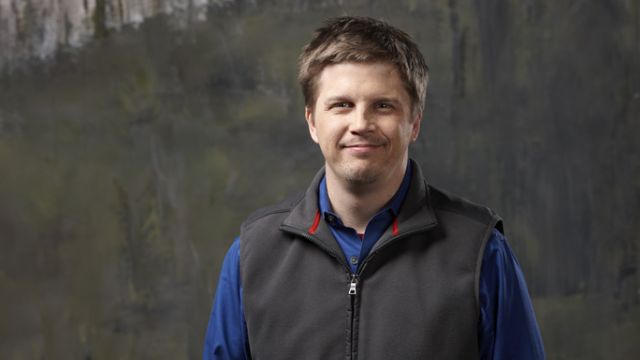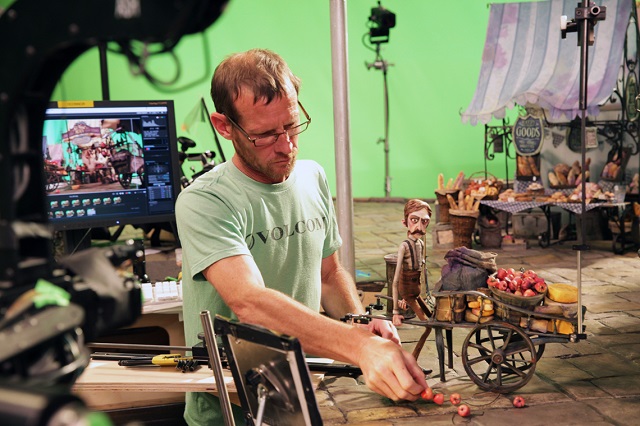Laika, LLC. is an American stop-motion animation studio specialising in feature films, commercial content for all mediums, music videos and short films. It is best known for its stop-motion feature films, ‘Coraline’, ‘ParaNorman’ and ‘The Boxtrolls’. The studio is owned by Nike co-founder and chairman Phil Knight and is located in Oregon’s Portland metropolitan area. His son, Travis acts as its president and CEO. The company had two divisions, Laika Entertainment for feature films and Laika/house for commercial content.
One of the core team members of Laika, Steve Emerson (Co-VFX Supervisor on ‘The Boxtrolls’), recently visited India and interacted with a select group of animation professionals and students during an exclusive India premiere and behind the scenes of ‘The Boxtrolls’ hosted by The Animation Society of India (TASI).
 AnimationXpress.com’s Sidharth Iyer caught up with Steve post his magnificent presentation on what went behind the making of this grand stop-motion animation feature from Laika; his experience on working on this feature (also his third with Laika, since Coraline and ParaNorman) and finally his learnings from this film.
AnimationXpress.com’s Sidharth Iyer caught up with Steve post his magnificent presentation on what went behind the making of this grand stop-motion animation feature from Laika; his experience on working on this feature (also his third with Laika, since Coraline and ParaNorman) and finally his learnings from this film.
Excerpts:-
Q. How’s your journey with Laika been? How different is VFX for live action from animation?
I have been at the studio for the past eight years now; I joined during the making of Coraline in 2008 and it’s been a really enriching as well as rewarding experience so far. Liaka is best known for its use of stop-motion in animation films that are both artistically relevant and endearing in terms of the storytelling as well.
Live action and animation are very different, but are similar in many aspects as well. Like on Coraline we were using Shake (software) instead of Nuke, and I was extracting characters in front of the green screens but here I am extracting puppets, so the fundamentals are more or less the same, but there is a whole different side of VFX on stop-motion, as I need to ensure that everything looks aesthetic and as photo real as possible with a specific style for the look of the film. Thus, it’s all about using props and materials that look as real as the original desired object.
Q. How did you manage the 1200 odd VFX shots on ‘The Boxtrolls’ and how many artists worked on the film?
VFX in some capacity has touched every single frame of this film, sometimes it’s as minute as a dead pixel clean-up because of camera artifact or sometimes an animator might have bumped into a tree and we have to go in and fix the set, we make a big effort to get much work done in less time. There are 25 core artists on such a project at Laika and when the sequence requires extra pair of hands then we may even scale up the workforce to upwards of 70 artists, but we will ensure the job is done well on time without compromising on the quality of delivery.
Q. What is the kind of creative freedom that the VFX artists have on such a tedious project?
Actually it really depends on the situation, generally most of the design effects and is known, as to how certain components in the film must look and feel; but sometimes there could be the case that some components of the film haven’t really been fleshed out completely and there is scope then for the visual artist to practice some creative liberty and show something that the studio buys into. But one needs to always ensure that the design and the various elements in the film are very cohesive and that everything feels like it belongs in the same world. Thus, it’s always best to have an expert in terms of the production designer, or art director or the director who has a single vision for the project supervising the project.
Q. What is it that Laika brings to the table that’s unique and diverse from other studios in the stop-motion animation space?
I truly believe that our facial replacement animation technique is the best in the world, and the protagonist Eggs from ‘The Boxtrolls’ being capable of delivering more than 1.4 million unique expressions is testament to our supremacy in this space. There are others who have attempted to replicate our success, but not many (rather none) have matched up to our quality and standard of delivery.
 Also what works in our favour is having a core team of experienced individuals, who have been around for the past 8-9 years and worked together on all the three projects, namely Coraline, ParaNorman and The Boxtrolls. Over the course of these projects we have gained a lot of experience and we have already started work on our fourth project. Collectively, we now hold the key to maximise every image and create the best quality of stop-motion animation that can be ‘as real’ as real can be to the eyes.
Also what works in our favour is having a core team of experienced individuals, who have been around for the past 8-9 years and worked together on all the three projects, namely Coraline, ParaNorman and The Boxtrolls. Over the course of these projects we have gained a lot of experience and we have already started work on our fourth project. Collectively, we now hold the key to maximise every image and create the best quality of stop-motion animation that can be ‘as real’ as real can be to the eyes.
Q. ‘The Boxtrolls’ has certainly managed to create a positive buzz in the market, how do you think will it fare at the box-office?
I love stop-motion animation and it’s a very expensive affair, so in terms of my personal expectations from this feature – will be to outperform its previous two siblings – Coraline ($75.29 million) and ParaNorman ($56 million) – to its credit it has managed to already get the biggest opening weekend for a Laika production and all of us are hoping and praying that it continues to carry that momentum and become the highest grossing stop-motion animation feature film of all-time, eclipsing the great Chicken Run from Aardman Animations Studios, which stands at a cool $106.83 million in lifetime collections. (Source: Box-Office Mojo)
Q. What are the learning takeaways of working on a magnum opus like ‘The Boxtrolls’?
I would just like to say that the animators on this film are the real movie stars; they are the ones breathing life into these puppets that take away all the love and accolades. A lot of the processes in the film come to a point where we try and make life easier for the animators, by replacing a few important elements on the set digitally, so that they can have easier access to the puppets and can make them animate better.
 In this feature, there was a lot of use of face plants. So we were basically taking mechanical head puppets and we would animate them without any mouth shape or material, as we wanted to use the rapid prototyping material in order to get that additional range of expressions to get the mouth shapes; so the animators would go up there and do their regular performance with puppets, but then they had to also subsequently go out there with the faces printed out by rapid prototyping and pose with them one frame at a time to land up on the expression on when the puppets did their first performance. This is when I learnt that these animators are willing to make any sacrifice in order to get the best possible performance out of the puppets. Stop-Motion animation is serious business and I would like to take this opportunity to once again recognize the efforts of each and every animator who has worked on this film.
In this feature, there was a lot of use of face plants. So we were basically taking mechanical head puppets and we would animate them without any mouth shape or material, as we wanted to use the rapid prototyping material in order to get that additional range of expressions to get the mouth shapes; so the animators would go up there and do their regular performance with puppets, but then they had to also subsequently go out there with the faces printed out by rapid prototyping and pose with them one frame at a time to land up on the expression on when the puppets did their first performance. This is when I learnt that these animators are willing to make any sacrifice in order to get the best possible performance out of the puppets. Stop-Motion animation is serious business and I would like to take this opportunity to once again recognize the efforts of each and every animator who has worked on this film.
